-
 Bitcoin
Bitcoin $107,380.2492
-0.19% -
 Ethereum
Ethereum $2,496.4194
2.52% -
 Tether USDt
Tether USDt $1.0002
0.01% -
 XRP
XRP $2.2698
3.58% -
 BNB
BNB $658.6709
1.57% -
 Solana
Solana $156.2095
3.14% -
 USDC
USDC $1.0000
0.01% -
 TRON
TRON $0.2795
1.31% -
 Dogecoin
Dogecoin $0.1664
1.40% -
 Cardano
Cardano $0.5812
3.78% -
 Hyperliquid
Hyperliquid $40.8539
6.14% -
 Bitcoin Cash
Bitcoin Cash $513.3617
3.74% -
 Sui
Sui $2.7992
-0.38% -
 Chainlink
Chainlink $13.5045
1.13% -
 UNUS SED LEO
UNUS SED LEO $9.0369
-0.11% -
 Avalanche
Avalanche $18.0365
-0.20% -
 Stellar
Stellar $0.2401
1.74% -
 Toncoin
Toncoin $2.9395
2.20% -
 Shiba Inu
Shiba Inu $0.0...01148
-0.46% -
 Litecoin
Litecoin $86.8907
0.16% -
 Hedera
Hedera $0.1521
2.24% -
 Monero
Monero $320.1315
3.06% -
 Polkadot
Polkadot $3.4232
-0.02% -
 Dai
Dai $0.9999
0.01% -
 Bitget Token
Bitget Token $4.5549
-0.85% -
 Ethena USDe
Ethena USDe $1.0003
0.00% -
 Uniswap
Uniswap $7.2040
0.12% -
 Aave
Aave $277.8968
1.91% -
 Pepe
Pepe $0.0...09854
2.02% -
 Pi
Pi $0.5106
-3.03%
What are the risks of the long arrangement of the moving average but the decreasing trading volume?
A long MA arrangement suggests bullish momentum, but declining volume may signal weak participation and potential trend reversal.
Jun 30, 2025 at 10:57 pm

Understanding the Long Arrangement of Moving Averages
The long arrangement of moving averages refers to a specific alignment of multiple moving averages (MAs) on a price chart where longer-term MAs are positioned below shorter-term ones, signaling a potential uptrend. Traders often use combinations such as the 50-day, 100-day, and 200-day moving averages to identify this setup. When these lines align in ascending order from bottom to top — 200-day, then 100-day, followed by the 50-day — it suggests a strong bullish trend is in place.
However, while this configuration typically instills confidence among traders, it may not always indicate sustainable momentum. The key issue arises when this bullish signal appears alongside other conflicting indicators, such as declining trading volume.
In technical analysis, the long MA arrangement alone should never be used in isolation.
The Role of Trading Volume in Confirming Trends
Trading volume is a critical component in validating price movements. It reflects the number of assets traded over a given period and provides insight into the strength of a trend. High volume during price increases usually confirms that buyers are actively pushing the market upward. Conversely, low or decreasing volume during an uptrend raises concerns about the sustainability of that trend.
When prices rise but volume declines, it indicates that fewer participants are supporting the move. This discrepancy between rising prices and shrinking volume can be a red flag for potential reversals or consolidations.
A healthy uptrend must be supported by increasing volume; otherwise, the rally may lack conviction.
Identifying Risks in the Disconnection Between Moving Averages and Volume
One of the primary risks associated with a long MA arrangement coupled with decreasing volume is the possibility of a false breakout or fakeout. In such scenarios, the price might continue climbing temporarily due to algorithmic trading or short-covering, but without real demand backing the movement, the trend eventually collapses.
Another risk lies in market manipulation, especially in cryptocurrency markets where large players (whales) can influence both price and volume. These actors may create artificial trends to lure retail investors before dumping their holdings.
Additionally, liquidity issues become more pronounced under such conditions. If the buying pressure diminishes while sellers remain active, a sharp correction could follow.
False signals and weak participation make the combination of long MA alignment and low volume particularly dangerous.
How to Interpret This Scenario in Cryptocurrency Markets
Cryptocurrency markets are known for their volatility and sensitivity to sentiment. A long MA arrangement may persist for weeks or even months, giving the illusion of a secure bull run. However, if the underlying volume doesn’t support this structure, traders should exercise caution.
To interpret this situation effectively:
- Monitor the relationship between price and volume using tools like the On-Balance Volume (OBV) indicator.
- Check for divergences between volume and price across multiple timeframes (e.g., daily, weekly).
- Use candlestick patterns to assess whether the current price action is driven by genuine buying interest or short squeezes.
Traders should also consider macroeconomic factors, regulatory news, and exchange dynamics that might distort volume readings.
Volume divergence is a warning sign that the market may be losing momentum despite favorable moving average setups.
Mitigating Risks Through Technical and Fundamental Analysis
To reduce exposure to misleading signals, traders can combine technical analysis with fundamental insights. For instance, evaluating the project's development activity, community engagement, and adoption metrics can provide context for whether the price movement is justified.
From a technical standpoint:
- Set stop-loss orders beneath key moving averages to protect against sudden reversals.
- Employ volume-weighted moving averages to filter out noise and focus on significant moves.
- Avoid entering new positions solely based on MA alignment without confirming volume trends.
It’s also essential to understand how different exchanges report volume. Some platforms inflate volume through wash trading, which can mislead traders relying solely on volume data.
Diversifying analytical methods helps avoid costly mistakes when moving averages suggest strength but volume tells a different story.
Frequently Asked Questions
Q: Can I still trade during a long MA arrangement with low volume?
Yes, you can trade, but with caution. Consider smaller position sizes and tighter stop-loss levels. Always confirm with other indicators like RSI or MACD to ensure there isn't hidden weakness.
Q: How do I differentiate between real and fake volume in crypto charts?
Check volume consistency across multiple exchanges. Real volume tends to appear across several platforms simultaneously. Fake volume often shows spikes on a single exchange without corresponding price movement elsewhere.
Q: What timeframes are most reliable for analyzing MA alignment and volume?
Daily and weekly charts offer the most reliable signals for long-term trends. Shorter timeframes like 1-hour or 4-hour charts can be useful for intraday trades but are more prone to noise and manipulation.
Q: Are there any specific tools or indicators that help detect volume divergence?
Yes, tools like the On-Balance Volume (OBV), Chaikin Money Flow (CMF), and Volume Profile can help identify discrepancies between price and volume, offering early warnings of potential trend reversals.
Disclaimer:info@kdj.com
The information provided is not trading advice. kdj.com does not assume any responsibility for any investments made based on the information provided in this article. Cryptocurrencies are highly volatile and it is highly recommended that you invest with caution after thorough research!
If you believe that the content used on this website infringes your copyright, please contact us immediately (info@kdj.com) and we will delete it promptly.
- SUI, TVL, BlockDAG: Navigating the Altcoin Landscape with Strategic Vision
- 2025-07-01 04:30:12
- BlockDAG, Cryptos, 2025 Trends: What's Hot and What's Not
- 2025-07-01 05:10:12
- Avalanche's Reign Challenged: Will Ruvi AI Lead the Next Bull Run?
- 2025-07-01 05:10:12
- Score Big with BetMGM Bonus: MLB, Soccer, and More!
- 2025-07-01 05:15:12
- Michael Saylor's Bitcoin Binge: What's Driving the $500 Million Purchase?
- 2025-07-01 04:30:12
- OKX and Binance Delist Trading Pairs: What's Going On?
- 2025-07-01 02:30:12
Related knowledge
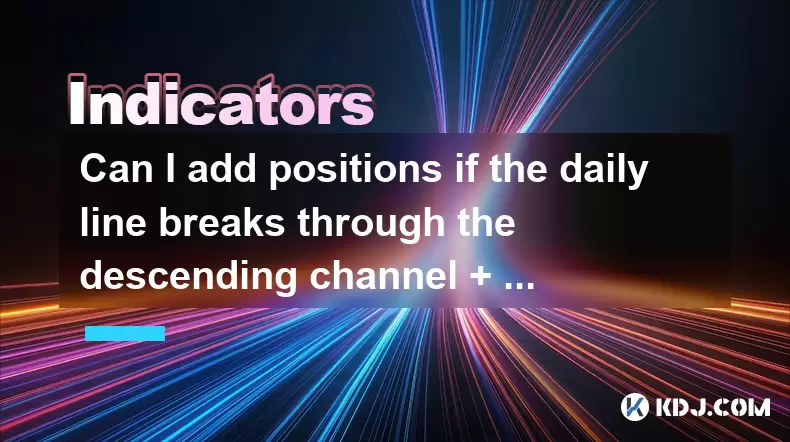
Can I add positions if the daily line breaks through the descending channel + the 30-minute moving average is in a bullish arrangement?
Jun 30,2025 at 11:00pm
Understanding the Descending Channel BreakoutWhen a daily line breaks through a descending channel, it indicates a potential shift in market sentiment from bearish to bullish. A descending channel is formed by drawing two parallel trendlines, where the upper trendline connects the lower highs and the lower trendline connects the lower lows. A breakout o...
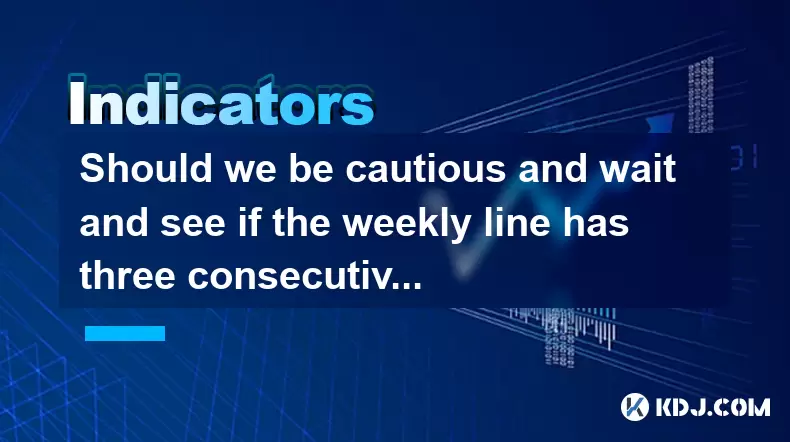
Should we be cautious and wait and see if the weekly line has three consecutive Yin lines + the daily MACD green column enlarges?
Jul 01,2025 at 12:42am
Understanding the Weekly Three Consecutive Yin Lines PatternIn technical analysis, three consecutive Yin lines on a weekly chart indicate a strong bearish trend. Each Yin line represents a week where the closing price is lower than the opening price, signaling consistent selling pressure. When this pattern appears three times in succession, it often sug...
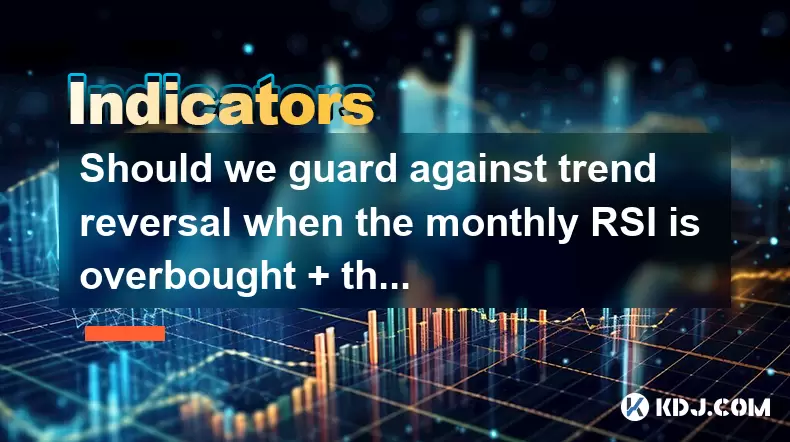
Should we guard against trend reversal when the monthly RSI is overbought + the weekly line has a long upper shadow?
Jun 30,2025 at 11:35pm
Understanding RSI Overbought Conditions in CryptocurrencyThe Relative Strength Index (RSI) is a momentum oscillator commonly used in technical analysis to identify overbought or oversold conditions in an asset. When the monthly RSI of a cryptocurrency reaches above 70, it is generally considered overbought, suggesting that the asset may be due for a pul...
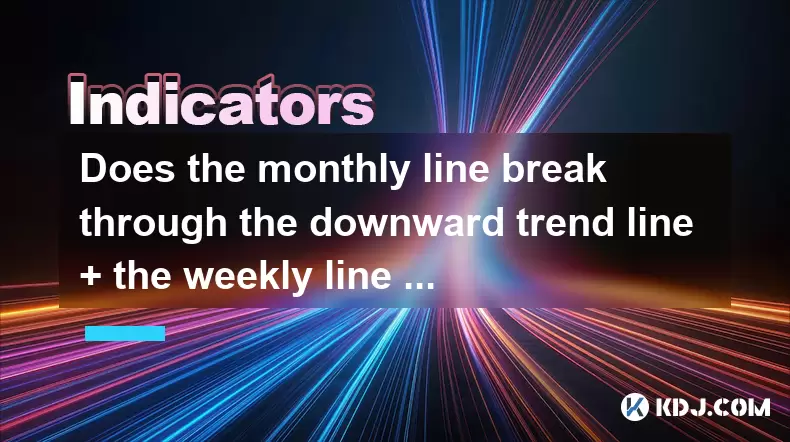
Does the monthly line break through the downward trend line + the weekly line with large volume confirm the reversal?
Jul 01,2025 at 04:49am
Understanding the Monthly Line Breakthrough in CryptocurrencyIn cryptocurrency trading, a monthly line refers to the price movement over a 30-day period represented on a candlestick chart. When this monthly line breaks through a downward trend line, it suggests that the long-term bearish momentum might be weakening. A downward trend line is drawn by con...
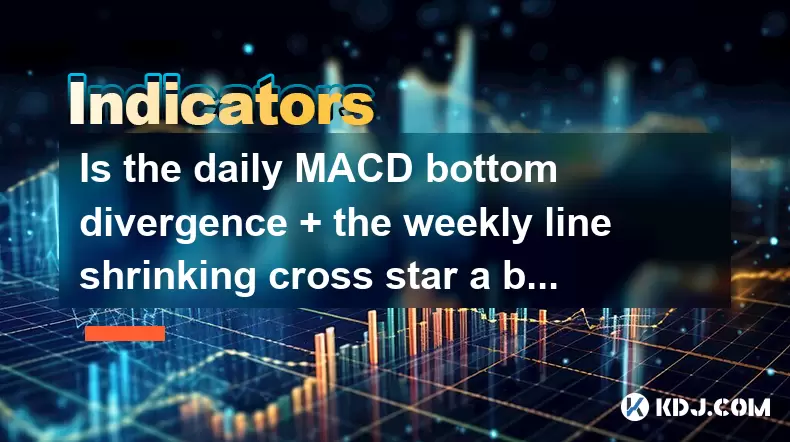
Is the daily MACD bottom divergence + the weekly line shrinking cross star a bottoming signal?
Jul 01,2025 at 03:49am
Understanding MACD Bottom Divergence in Cryptocurrency TradingThe Moving Average Convergence Divergence (MACD) is a widely used technical indicator among cryptocurrency traders to identify potential trend reversals. A bottom divergence occurs when the price of an asset makes a lower low, but the MACD line forms a higher low. This suggests that bearish m...
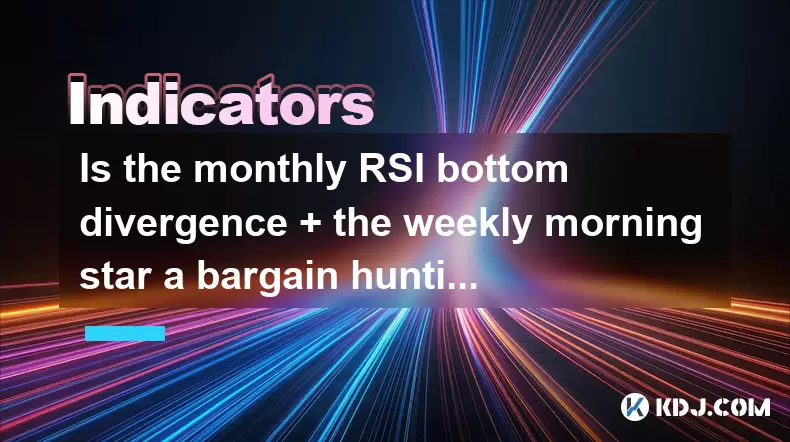
Is the monthly RSI bottom divergence + the weekly morning star a bargain hunting opportunity?
Jun 30,2025 at 09:57pm
Understanding RSI Bottom Divergence in Monthly TimeframesThe Relative Strength Index (RSI) is a momentum oscillator commonly used to identify overbought or oversold conditions in the market. When traders refer to a monthly RSI bottom divergence, they're observing a situation where the price makes a lower low, but the RSI makes a higher low on the monthl...

Can I add positions if the daily line breaks through the descending channel + the 30-minute moving average is in a bullish arrangement?
Jun 30,2025 at 11:00pm
Understanding the Descending Channel BreakoutWhen a daily line breaks through a descending channel, it indicates a potential shift in market sentiment from bearish to bullish. A descending channel is formed by drawing two parallel trendlines, where the upper trendline connects the lower highs and the lower trendline connects the lower lows. A breakout o...

Should we be cautious and wait and see if the weekly line has three consecutive Yin lines + the daily MACD green column enlarges?
Jul 01,2025 at 12:42am
Understanding the Weekly Three Consecutive Yin Lines PatternIn technical analysis, three consecutive Yin lines on a weekly chart indicate a strong bearish trend. Each Yin line represents a week where the closing price is lower than the opening price, signaling consistent selling pressure. When this pattern appears three times in succession, it often sug...

Should we guard against trend reversal when the monthly RSI is overbought + the weekly line has a long upper shadow?
Jun 30,2025 at 11:35pm
Understanding RSI Overbought Conditions in CryptocurrencyThe Relative Strength Index (RSI) is a momentum oscillator commonly used in technical analysis to identify overbought or oversold conditions in an asset. When the monthly RSI of a cryptocurrency reaches above 70, it is generally considered overbought, suggesting that the asset may be due for a pul...

Does the monthly line break through the downward trend line + the weekly line with large volume confirm the reversal?
Jul 01,2025 at 04:49am
Understanding the Monthly Line Breakthrough in CryptocurrencyIn cryptocurrency trading, a monthly line refers to the price movement over a 30-day period represented on a candlestick chart. When this monthly line breaks through a downward trend line, it suggests that the long-term bearish momentum might be weakening. A downward trend line is drawn by con...

Is the daily MACD bottom divergence + the weekly line shrinking cross star a bottoming signal?
Jul 01,2025 at 03:49am
Understanding MACD Bottom Divergence in Cryptocurrency TradingThe Moving Average Convergence Divergence (MACD) is a widely used technical indicator among cryptocurrency traders to identify potential trend reversals. A bottom divergence occurs when the price of an asset makes a lower low, but the MACD line forms a higher low. This suggests that bearish m...

Is the monthly RSI bottom divergence + the weekly morning star a bargain hunting opportunity?
Jun 30,2025 at 09:57pm
Understanding RSI Bottom Divergence in Monthly TimeframesThe Relative Strength Index (RSI) is a momentum oscillator commonly used to identify overbought or oversold conditions in the market. When traders refer to a monthly RSI bottom divergence, they're observing a situation where the price makes a lower low, but the RSI makes a higher low on the monthl...
See all articles

























































































